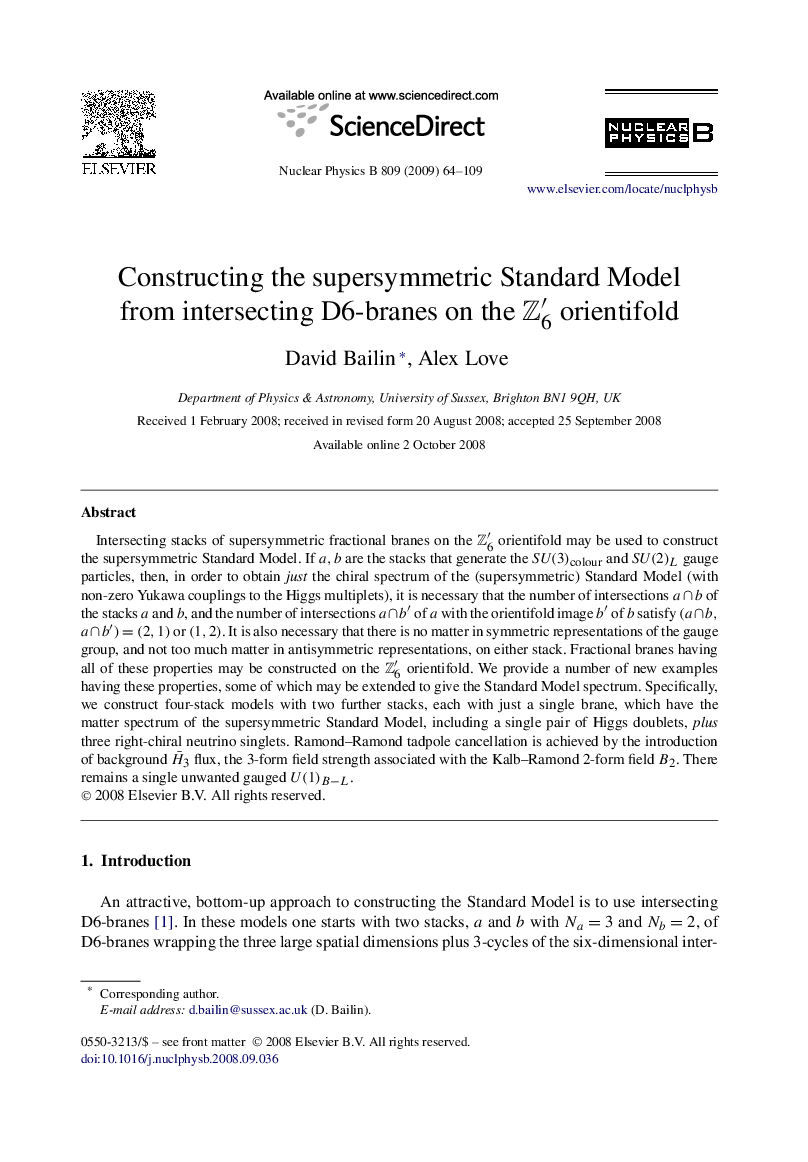| کد مقاله | کد نشریه | سال انتشار | مقاله انگلیسی | نسخه تمام متن |
|---|---|---|---|---|
| 1841741 | 1527785 | 2009 | 46 صفحه PDF | دانلود رایگان |
عنوان انگلیسی مقاله ISI
Constructing the supersymmetric Standard Model from intersecting D6-branes on the Z6â² orientifold
دانلود مقاله + سفارش ترجمه
دانلود مقاله ISI انگلیسی
رایگان برای ایرانیان
موضوعات مرتبط
مهندسی و علوم پایه
ریاضیات
فیزیک ریاضی
پیش نمایش صفحه اول مقاله

چکیده انگلیسی
Intersecting stacks of supersymmetric fractional branes on the Z6â² orientifold may be used to construct the supersymmetric Standard Model. If a,b are the stacks that generate the SU(3)colour and SU(2)L gauge particles, then, in order to obtain just the chiral spectrum of the (supersymmetric) Standard Model (with non-zero Yukawa couplings to the Higgs multiplets), it is necessary that the number of intersections aâ©b of the stacks a and b, and the number of intersections aâ©bâ² of a with the orientifold image bâ² of b satisfy (aâ©b,aâ©bâ²)=(2,1) or (1,2). It is also necessary that there is no matter in symmetric representations of the gauge group, and not too much matter in antisymmetric representations, on either stack. Fractional branes having all of these properties may be constructed on the Z6â² orientifold. We provide a number of new examples having these properties, some of which may be extended to give the Standard Model spectrum. Specifically, we construct four-stack models with two further stacks, each with just a single brane, which have the matter spectrum of the supersymmetric Standard Model, including a single pair of Higgs doublets, plus three right-chiral neutrino singlets. Ramond-Ramond tadpole cancellation is achieved by the introduction of background H¯3 flux, the 3-form field strength associated with the Kalb-Ramond 2-form field B2. There remains a single unwanted gauged U(1)BâL.
ناشر
Database: Elsevier - ScienceDirect (ساینس دایرکت)
Journal: Nuclear Physics B - Volume 809, Issues 1â2, 1 March 2009, Pages 64-109
Journal: Nuclear Physics B - Volume 809, Issues 1â2, 1 March 2009, Pages 64-109
نویسندگان
David Bailin, Alex Love,